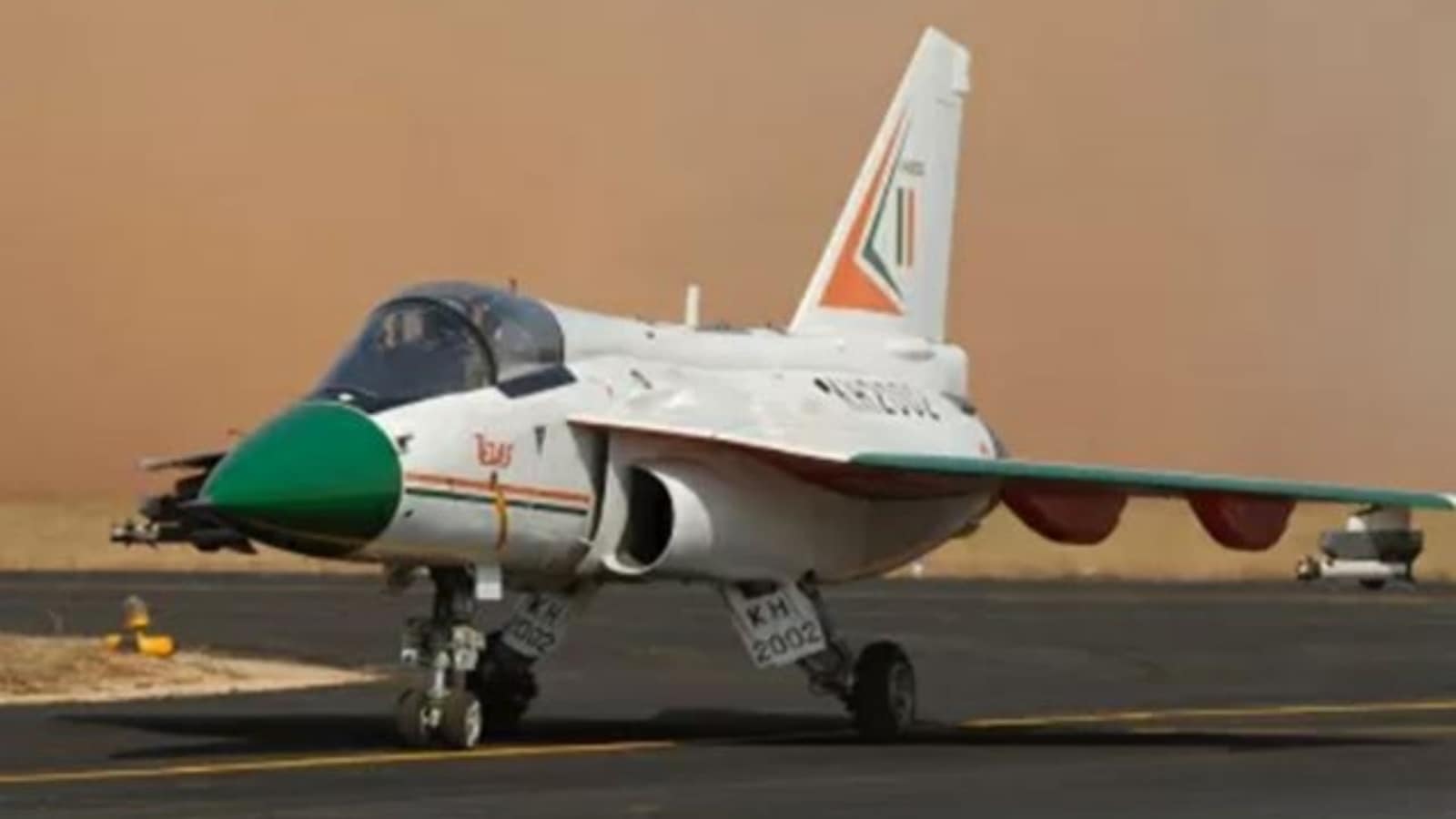Two years after state-owned Hindustan Aeronautics Limited (HAL) and US defence major General Electric (GE) Aerospace signed a pact to jointly produce fighter jet engines, the two sides will begin commercial negotiations on the deal shortly, The Indian Express has learnt.
Additionally, the Defence Research and Development Organisation (DRDO) has finalised French major Safran to join hands with the Bengaluru-based Gas Turbine Research Establishment to manufacture an advanced jet engine in India which will power India’s indigenous fifth generation Advanced Medium Combat Aircraft (AMCA).
Officials familiar with developments on the HAL-GE pact said the aim is to conclude commercial negotiations within the next three months and finalise the deal to co-produce the F414 engines, which will power the Light Combat Aircraft Mk2 jets for the IAF.
In June 2023, GE Aerospace signed a Memorandum of Understanding (MoU) with HAL to produce fighter jet engines.
The announcement of the pact had come during Prime Minister Narendra Modi’s state visit to the US.
The final deal was expected to be signed soon after approval from the US Congress and finalisation of commercial terms. The US Congress cleared the engine deal in August 2023, but negotiations have been ongoing for the last two years.
Officials said while GE Aerospace had agreed to transfer 80 per cent of the engine technology to India following intense negotiations since 2012, it was withholding the transfer of certain key components.
Story continues below this ad
The key components of any jet engine include compressor, combustion chamber and turbine.
Earlier, in 2012, GE Aerospace had agreed to transfer only 58 per cent of the technology.
Twelve key technologies are being offered by GE Aerospace under the 80 per cent technology transfer, including special coatings for corrosion, erosion, and thermal barrier for hot end, machining and coating for single crystal for turbine blades, machining and coating of nozzle guide vanes and other hot end parts, and blisk machining.
Officials said despite the limitations, commercial negotiations are likely to be completed in time and the deal is likely to be finalised within the next three months, by the end of the year.
Story continues below this ad
Asked if the current low in diplomatic relations between India and the US will affect this deal in any way, officials said it will not, since all defence-related procurement, talks and negotiations between the two countries are progressing as per schedule.
Officials had earlier said that manufacturing of the jet engine should start taking place within three years of signing the deal and will be timed with the orders placed for the LCA Mk2 and the testing of the aircraft prototype.
On advanced jet engines with higher thrust capabilities for the AMCA, India had been in discussions with various global jet engine manufacturers, including Safran SA of France and Rolls-Royce of the UK, to obtain technology transfer and IPR for.
The DRDO will soon approach the Cabinet Committee on Security to design, develop and produce the advanced jet engine in India with full technology transfer from Safran.
Story continues below this ad
Key to fighter jet squadron
India has been making efforts to produce combat jet engines by partnering with a global engine manufacturer and, in this light, the HAL-GE pact was seen as historic. However, the delay would have a cascading effect on India’s LCA Mk 2 programme, key to building its fighter jet squadron strength
The decision to finalise Safran was also mentioned Friday by Defence Minister Rajnath Singh at the Economic Times World Leaders Forum.
In his Independence Day address on August 15, Prime Minister Modi had called upon Indian innovators, young scientists, engineers, professionals and all government departments to work towards developing fighter jet engines indigenously, so that future defence technology is entirely home-grown and self-reliant.
“Should we not have our jet engines for our Made-in-India fighter jets? Just like how we made vaccines during Covid, and UPI for digital payments, we should build jet engines on our own, too. Our scientists and youth must take it up as a direct challenge,” he said.
India’s efforts to make aero engines indigenously have so far not succeeded. Only a handful of countries have mastered the complex technology and metallurgy required for combat jet engines.

